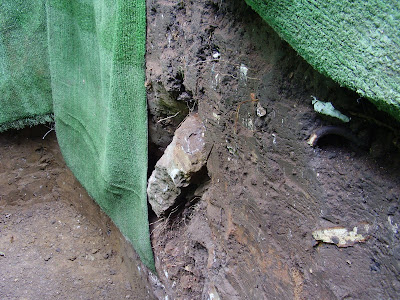
The reason the Chilian mine rescue caught more than people’s imagination is that it hooks into one of our archetypes, or so I ventured this morning while displaying a picture of this icon.
The risen Christ has broken into hell (the broken doors are in a cross at his feet, the black abyss below is inhabited by the shadows of demons) and has pulled out Adam and Eve by their wrists; the whole of humanity is no longer subject to the destruction and futility of its fallen condition. Below, others await their rescue while two angels bind Satan. Above, Kings (David and Solomon) are among those who watch and welcome.
So the rescue mission is able to drill down and draw the men one by one from what they had described as ‘hell’ and from the darkness which they had begun to think would be their final reality. Below, the medics have gone down to help those who are yet to be brought up. Above, the President, crowds and media gather and respond.
Only in naming the capsule ‘phoenix’ does this parallel appear to miss a beat, but the Christian faith and reaction of those brought up balances this; this really is our story.
In this icon, says Rowan Williams, “Adam and Eve stand for wherever it is in the human story that fear and refusal of God began - not a moment we can date in ordinary history, any more than we can date in the history of each one of us where we began to forget God. But we are always dealing with the after-effects of that moment, both as a human race and as particular persons. The icon declares that wherever that lost moment is or was, Christ has been there, to implant the possibility, never destroyed, of another turning, another future."
In this icon and this story, at the very least we are literally pulled away from ultimate fear and final abandonment. The icon declares and the story makes graspable this possibility, which is why both capture us.












